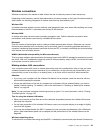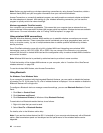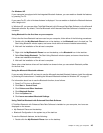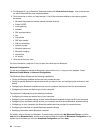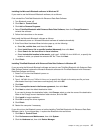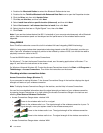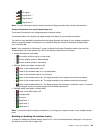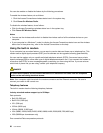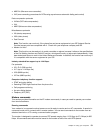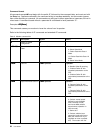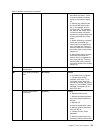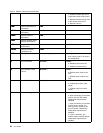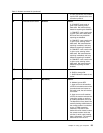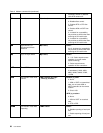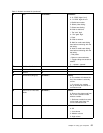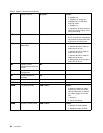
• MNP2-4 (Microcom error correction)
• V.42 (error-correcting procedures for DCEs using asynchronous automatic dialing and control)
Data compression protocols
• V.42bis (DCE data compression)
• V.44
• MNP5 (Microcom data compression)
Miscellaneous protocols
• V.8 (startup sequence)
• V.80 (video phone)
• Fast Connect
Note: This function can work only if the phone line and server equipment at your ISP (Internet Service
Provider) access point are compatible with it. Check with your telephone company and ISP.
• Modem on Hold
Note: This function can be used only in certain countries or regions, because it relies on the specications
of the Call Waiting function and Caller ID function, which each country or region sets independently. It has
been tested and shown to work in the United States and Canada. In addition, the function can work only if
it is compatible with the server equipment at your ISP.
Industry standard fax support up to 14.4 Kbps:
Fax protocols
• V.21 Ch 2 (300-bps fax)
• V.17 (up to 14.4-Kbps fax)
• V.29 (9600-bps fax)
• V.27ter (4800-bps fax)
Computer telephony function support:
• DTMF and pulse dialing
• Detecting DTMF digits received from the phone line
• Call progress monitoring
• An auto-dialing feature
• Telephony API (TAPI)
Modem commands
This section provides information on the AT modem commands, in case you need to operate your modem
from terminal software.
Running commands
Your modem is in command mode at power-on and is ready to receive and run AT commands. It remains in
command mode until it connects with a remote modem. You can send commands to the modem from an
attached terminal or a PC running a communication program.
The modem is designed to operate at common DTE speeds ranging from 115.2 Kbps (or 57.6 Kbps) to 300
Kbps. All commands and data must be issued to the modem at one of the valid DTE speeds.
Chapter 2. Using your computer 51



